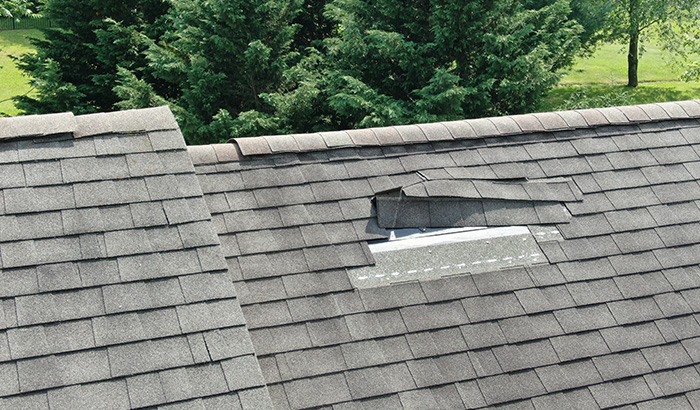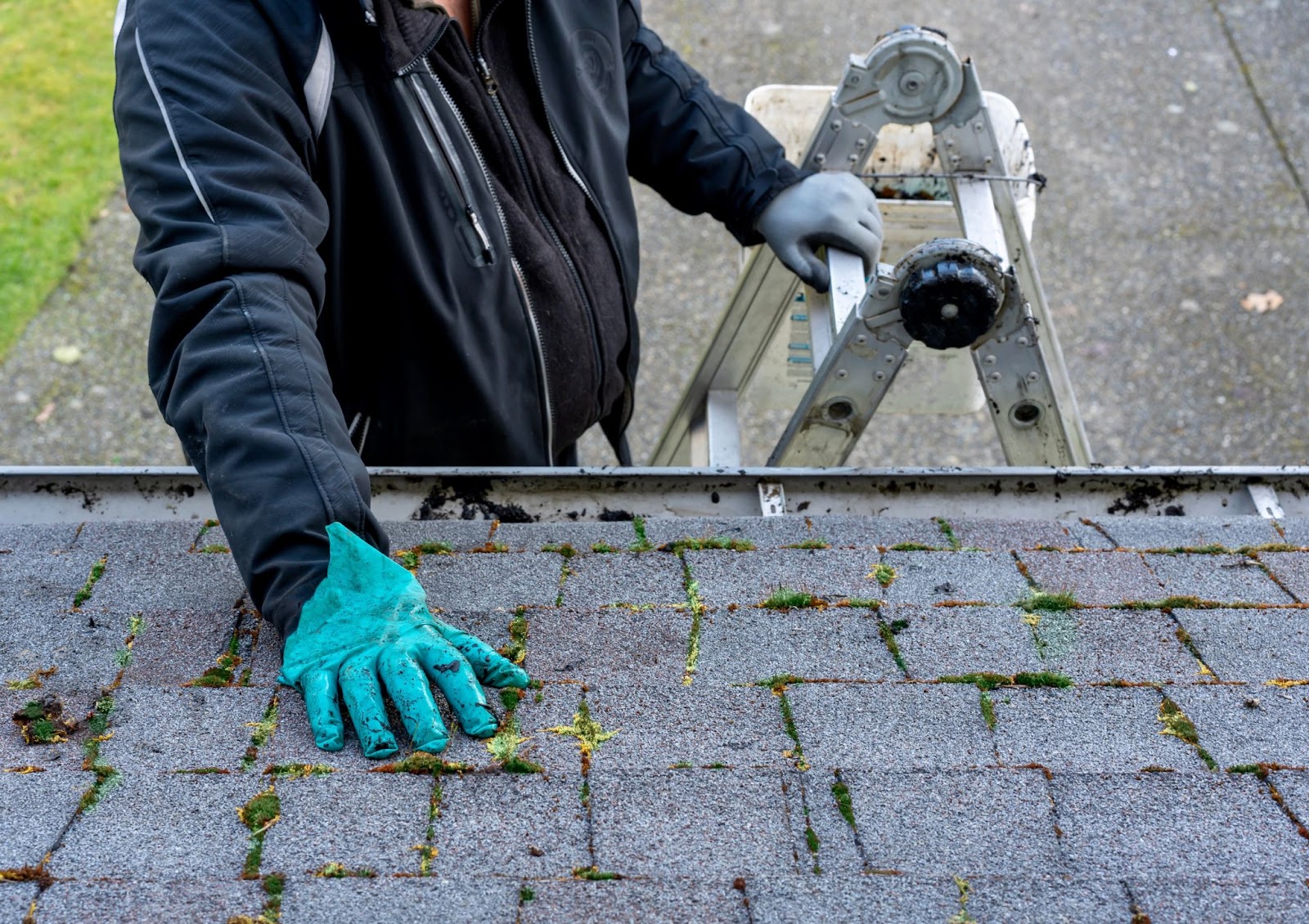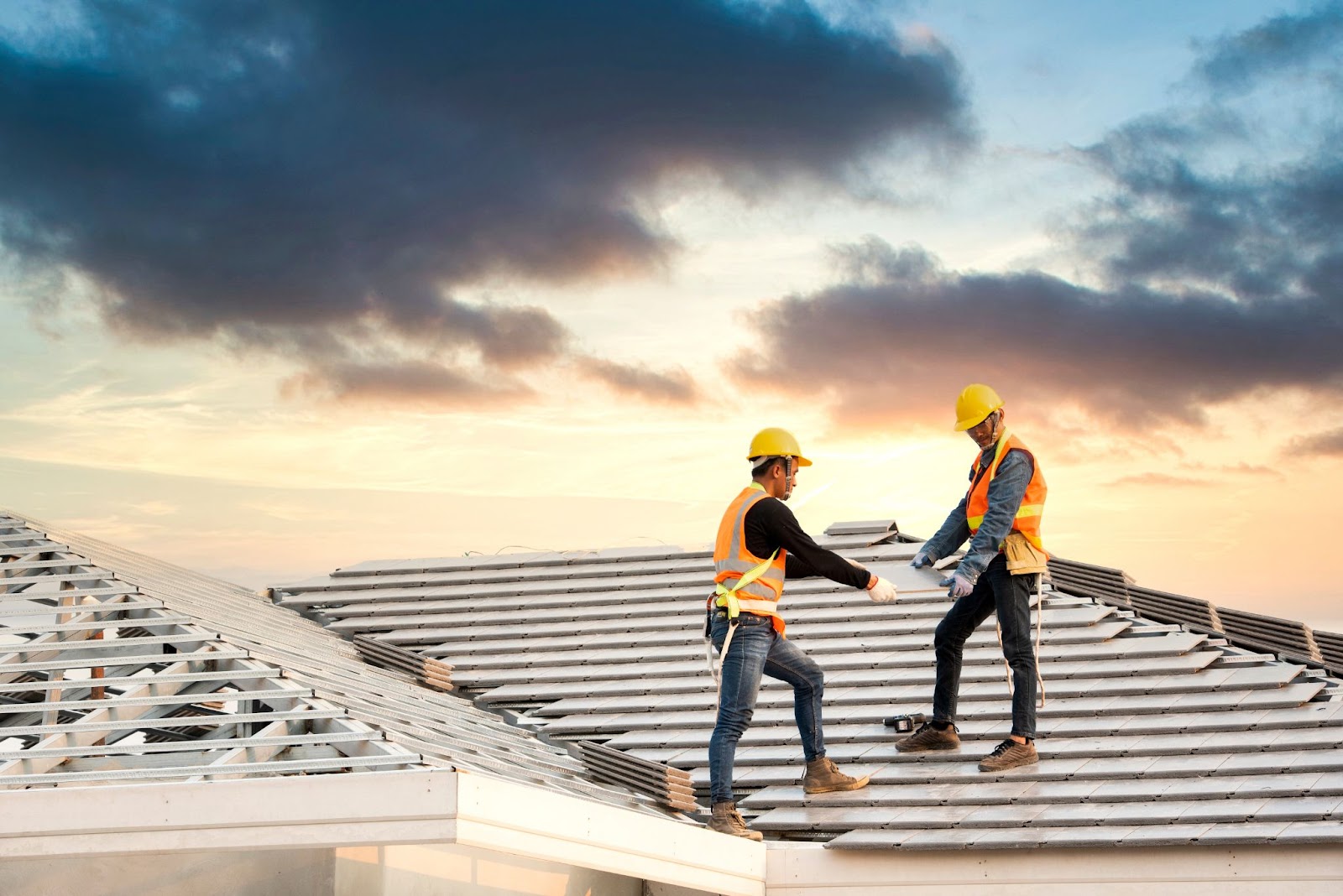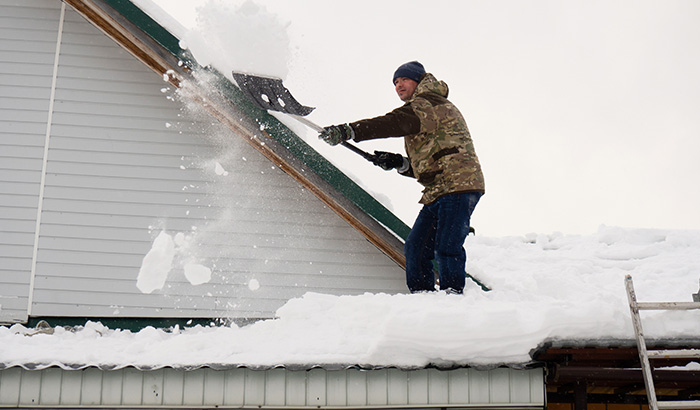Maintaining your home’s roof is crucial for its longevity and safety. The roof is a key element of your home, protecting you and your belongings from weather and external damage. Despite its importance, it often goes unnoticed until problems arise.
This guide is your tool to change that, offering a deep dive into understanding your roof’s structure, recognizing signs of damage, and learning how to conduct thorough inspections.
You’ll learn to identify issues like a professional while addressing them effectively, whether through DIY fixes or by knowing when to call in experts. We cover everything from the anatomy of your roof and seasonal maintenance tips to the specifics of inspecting shingles, flashing, gutters, and more. This information aims to empower you with the knowledge to keep your roof in top condition, ensuring it continues to protect your home efficiently.
Deep dive into roof anatomy
Components and their functions: Your roof is more than shingles or tiles. It’s a complex system that includes the decking (or sheathing), underlayment, flashing, gutters, and, in many cases, specialized components like ridge vents or ice and water shields. Each of these plays a critical role in protecting your home.
For example, the underlayment provides an additional barrier against water, while the decking supports the weight of the roof materials. Understanding the role and typical lifespan of these components can guide your inspection process, helping you to identify when something isn’t performing as it should.
Enhancing regular inspection techniques
Checklist for biannual inspections: When conducting spring and fall roof inspections, use a checklist to cover all bases. Start from the ground, looking for signs of sagging or uneven roof lines, which could indicate structural issues.
Use binoculars to get a closer look at the roof’s surface, checking for damaged or missing shingles and the state of the flashing. If it’s safe, use a ladder to examine the gutters and downspouts up close, looking for blockages or signs of rust and wear. Finally, if you can access your attic, check for water stains, mold, or signs of daylight through the roof boards, which could indicate leaks.
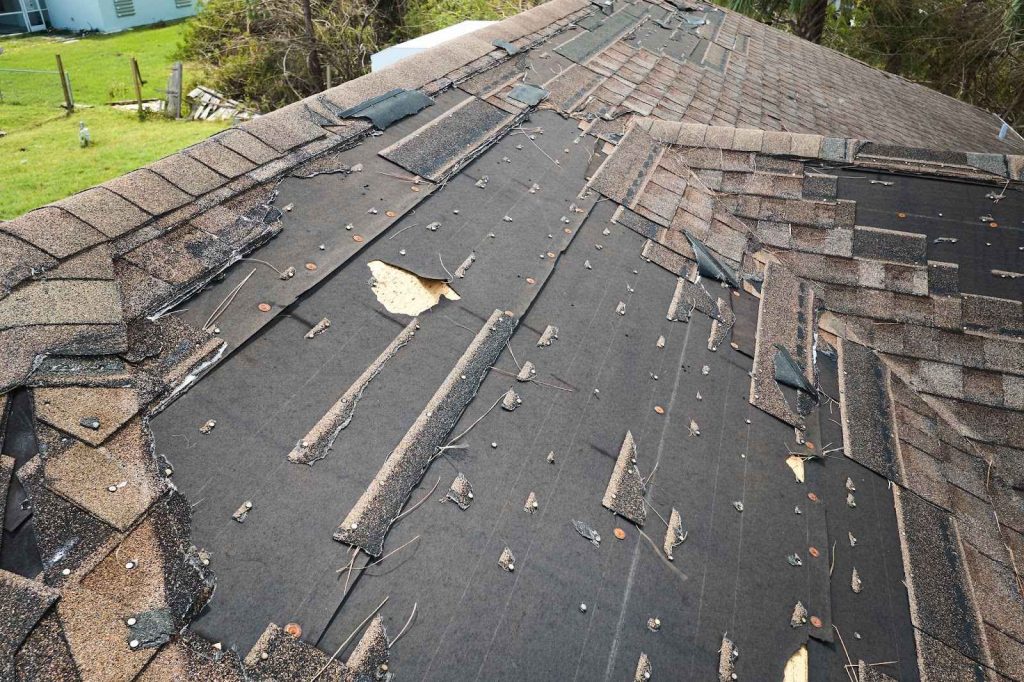
Shingle damage: beyond the basics
Identifying less obvious signs: Shingles can show subtler signs of wear beyond visible damage. For instance, if your shingles are losing their reflective granules, it could mean they are nearing the end of their useful life. Another less obvious sign is if the edges of the shingles start to cup or claw, indicating potential ventilation issues in the attic or moisture accumulation underneath.
Flashing: the critical seal
DIY inspection tips: When inspecting flashing, pay close attention to areas where it’s applied. Besides rust and cracks, look for signs of tar or roof cement, which some homeowners or less meticulous contractors might use as a quick fix for leaks. These materials can degrade over time, leading to more significant issues. Also, check for gaps between the flashing and the roof surface, as these may allow water to seep through.
Gutters and downspouts: a closer look
Effective cleaning and inspection tips: When cleaning gutters, consider using a garden hose to flush out downspouts and check for proper water flow. If water backs up, you might have a blockage, which could require disassembling the downspout to remove. Also, inspect the points where gutters attach to the roof, as these areas are prone to leaks.
Attic inspection: uncovering hidden issues
Advanced inspection techniques: In the attic, use a flashlight to closely inspect the underside of the roof decking and rafters for any signs of water staining or mold. Pay special attention to the areas around vents, chimneys, and where the roof meets the walls, as these are common leak points. Moisture meters are helpful tools in detecting unseen dampness in the wood.
The professional inspection advantage
What to expect from a professional inspection: Professional roof inspectors use various tools, including drones, moisture detection equipment, and thermal imaging cameras, to identify issues that aren’t visible to the naked eye. They can provide a detailed report that highlights current problems and predicts potential future issues based on the roof’s condition, helping you plan for repairs or replacement.
Vegetation management: protecting your roof
Strategies for tree and shrub management: Regularly inspect trees surrounding your property for dead branches or those hanging dangerously close to your roof. Consider consulting with an arborist to manage large trees, as strategic trimming helps reduce the risk of damage during storms. Keep vines and climbing plants away from your roof and siding, as they may introduce moisture and potentially damage roofing materials over time.
When to call in the pros: making the right call
Evaluating repair vs. professional help: For minor repairs, such as replacing a handful of shingles, it might be feasible to DIY if you have the right tools and safety equipment. However, it’s crucial to engage a professional roofing contractor for more complex issues, such as widespread damage, leaks involving flashing, or structural concerns. These professionals can address the problem effectively and ensure that repairs meet industry standards.
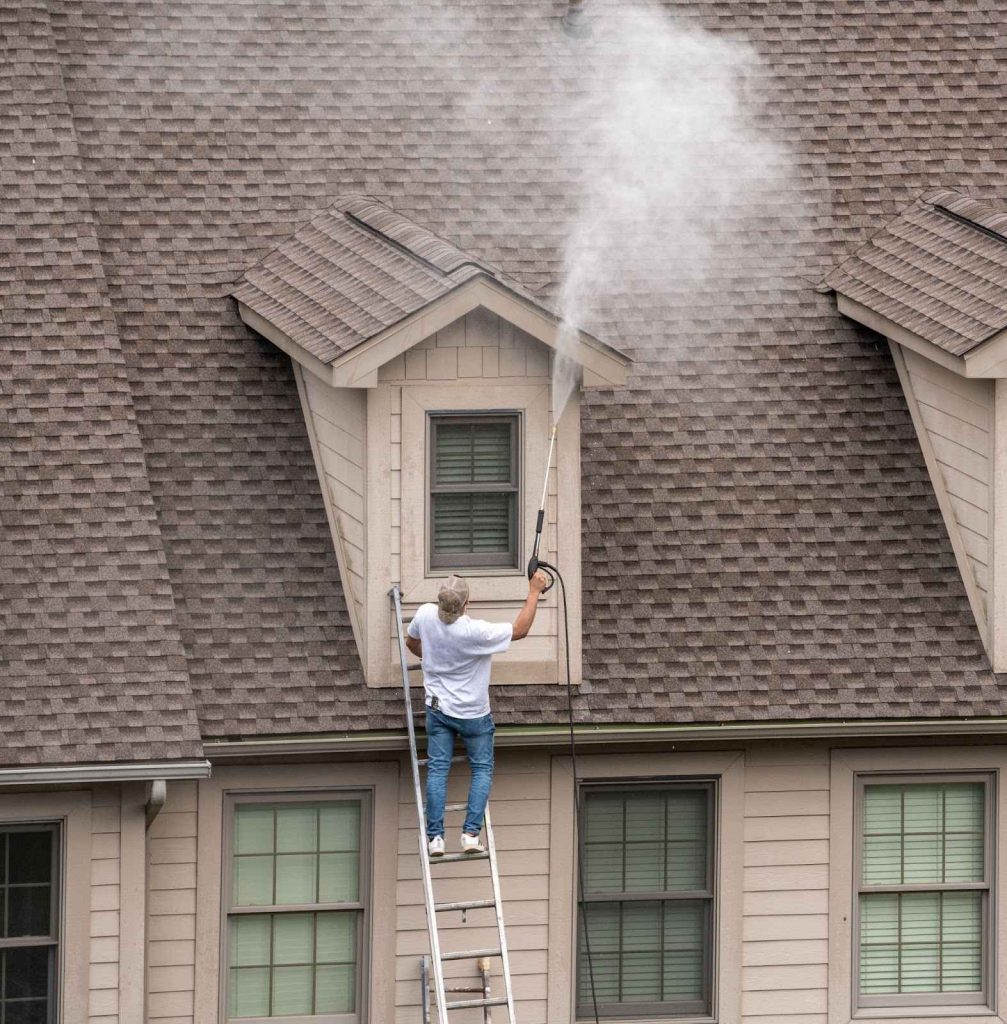
Emphasizing preventative maintenance
Setting up a maintenance plan: Create a maintenance schedule that includes regular gutter cleaning, debris removal from the roof surface, and the application of preventive treatments like moss and algae inhibitors where appropriate. After any significant weather event, conduct a thorough inspection to catch and address any damage early.
With the comprehensive insights and step-by-step guidance provided throughout this guide, you are now fully equipped with the knowledge and skills needed to take charge of your roof’s health and durability. Understanding how to spot the early indicators of wear and tear, such as missing shingles, cracks, or the presence of moss and algae, is your first line of defense in roof maintenance. This guide has armed you with the ability to discern these signs, ensuring you can act swiftly to mitigate any potential damage.
The nuances of professional roof inspections are no longer a mystery to you. You comprehend the value these assessments bring, especially in identifying issues that may not be visible to the untrained eye. Such inspections are pivotal in diagnosing underlying problems that, if left unchecked, could lead to significant structural damage.
Emphasizing regular maintenance cannot be overstated — it is the cornerstone of roof care. By establishing a routine that includes cleaning gutters, inspecting for damage, and ensuring your roofing materials are in good condition, you actively prevent the most common causes of roofing issues. This proactive approach not only saves you from facing expensive repairs but also significantly prolongs the life of your roof.
Your vigilance and proactive stance do more than protect your roof; they secure your home’s overall safety and comfort, contributing to its longevity and stability. This commitment to roof maintenance is a tangible investment in your property’s future, enhancing its value and ensuring it remains a haven for you and your loved ones for the long haul.
Whether you decide to handle maintenance tasks on your own or enlist the expertise of professionals for more complex issues, you now possess the critical ability to make informed, confident decisions. This guide has prepared you to approach roof maintenance strategically to tackle everything from routine upkeep to addressing unexpected damages.
Keep this guide within reach as a valuable resource in your home maintenance toolkit. Let it serve as a continual reference point as you embrace the vital responsibility of preserving your roof. By doing so, you not only maintain one of the essential barriers protecting your home from the elements but also ensure that your dwelling continues to offer security, comfort, and peace of mind in the years to come.
Need a roof inspection expert? We Do Roofing Salt Lake City is at your service!
When the time comes for a thorough roof inspection, essential repairs, a complete roof makeover, or any roofing-related services, the highly trained team at We Do Roofing Salt Lake City stands ready to exceed your expectations. Our reputation as the most reliable and esteemed roof inspection provider in the area stretches across the Wasatch Front, underpinned by more than two decades of exceptional service.
At We Do Roofing SLC, we pride ourselves on offering unparalleled roof inspections, meticulous repair work, comprehensive re-roofing projects, and expert installations for new constructions to a diverse clientele within Salt Lake County.
Our dedicated professionals are on hand to tackle all your roofing questions, equipping you with detailed information about repair processes, replacement choices, and the ins and outs of installing new roofs. Our goal is to guide you through every decision, ensuring you feel fully informed and confident from consultation to completion.
We Do Roofing SLC is not only a service provider but a partner in maintaining the integrity of your home or business. Catering to residential and commercial properties across Salt Lake City, West Valley City, Murray, West Jordan, and extending throughout Northern Utah, our team is renowned for its commitment to quality and customer satisfaction.
But our services don’t stop at inspections and installations. We also offer ongoing maintenance advice and solutions to extend the lifespan of your roof and prevent future issues. Understanding that each property is unique, we tailor our services to meet your needs and challenges, ensuring personalized attention and solutions that make a difference.
Don’t let roofing concerns weigh you down. Contact We Do Roofing SLC today for a comprehensive roof inspection estimate and discover why we’re the trusted name in roofing solutions across Northern Utah. Let us remove your roofing projects’ worries with our expertise, reliability, and unmatched customer service.

